Welcome to the exciting world of home automation! If you’ve been curious about transforming your living space into a ‘smart home’ but felt overwhelmed by the options, you’re in the right place. This guide is specifically designed for students and new users looking for a straightforward and effective way to begin their smart home journey. Getting started with smart home devices for beginners doesn’t have to be complicated or expensive. In fact, it can be an incredibly rewarding experience, bringing convenience, comfort, and even cost savings to your daily life.
The global smart home market is experiencing rapid growth, valued at USD 127.80 billion in 2024 and projected to reach an impressive USD 537.27 billion by 2030, with a Compound Annual Growth Rate (CAGR) of 27.0% from 2025 to 2030. This expansion reflects a growing interest in technology that simplifies everyday tasks. As of September 2023, approximately 42% of households across the United States have already adopted at least one smart home device, demonstrating how mainstream these technologies have become. [11]
Many smart home buyers are motivated by tangible benefits: a November 2024 consumer research report indicates that 41% are looking to save money, while 37% prioritize safety and security. Moreover, 2024 data shows that 97% of smart home device owners are at least somewhat satisfied with their devices, highlighting the positive impact these technologies have on users. [11]
To help you navigate your first steps into home automation, here are 5 must-have smart home devices for beginners that offer an easy setup and immediate benefits:
- Smart Plugs: Turn ordinary appliances into smart devices.
- Smart Lighting: Control your lights with ease and efficiency.
- Smart Thermostats: Optimize your home’s climate and save energy.
- Smart Security Cameras or Video Doorbells: Enhance your home’s safety and security.
- Voice Assistant-Enabled Smart Speakers/Displays: Your central command center for voice control.
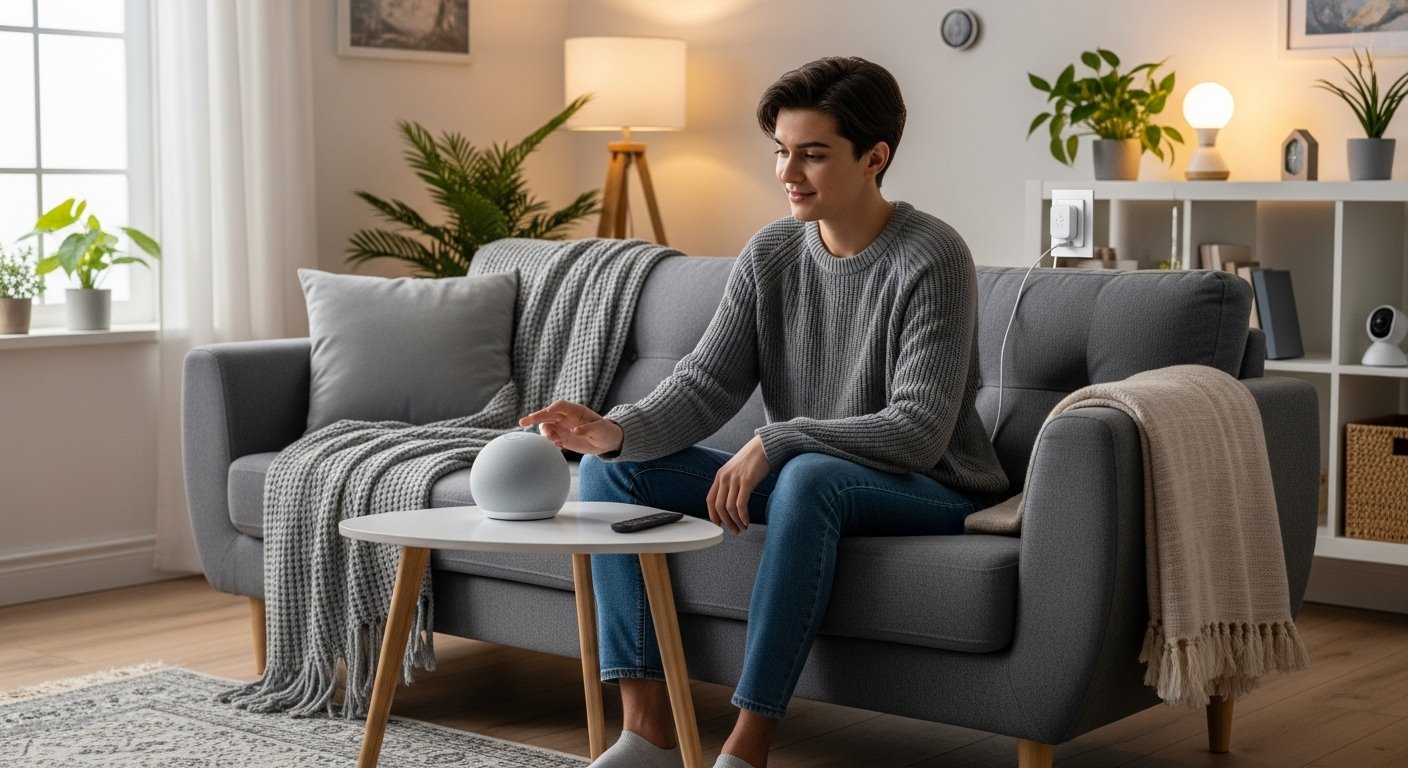
What is a Smart Home and How Does it Work?
A smart home is a residence equipped with internet-connected devices that enable the remote monitoring and management of appliances and systems, such as lighting, climate control, and security. [7] Think of it as your home gaining the ability to communicate, react, and even learn. At its core, home automation involves connecting various devices to a central network, often using your existing Wi-Fi connectivity, allowing them to work together seamlessly. [2]
These devices can be controlled through a smartphone app, a dedicated smart home hub, or increasingly, through voice commands using Voice Assistants like Amazon’s Alexa or Google Assistant. The goal of a smart home system is to provide security, comfort, convenience, and energy efficiency by automating actions based on your preferences and routines. For example, your lights can turn on automatically when you arrive home, or your thermostat can adjust the temperature to save energy when you’re away. The concept of a smart home is deeply intertwined with the broader Internet of Things (IoT), where everyday objects are embedded with sensors and software, allowing them to collect and exchange data over the internet. [3]
Do I Need a Hub for My Smart Home? Understanding Smart Home Ecosystems for Beginners
One of the most common questions for those beginning their smart home setup is: “Do I need a hub for my smart home?” The answer is: it depends on your ambitions and the complexity of your desired smart home ecosystem. For a truly simple home automation experience with just a few easy smart home devices, many modern smart devices can connect directly to your home’s Wi-Fi network and be controlled via their individual apps. This can be a great starting point for the cheapest smart home devices and a straightforward smart home starter kit.
However, as you expand your collection of smart devices, a dedicated Smart Hub, such as an Amazon Echo or Google Home device, can become incredibly useful. A smart home hub acts as a central brain, allowing different brands and types of devices to communicate with each other, even if they use different wireless protocols. [7] This creates a more cohesive and automated smart home ecosystem for beginners, streamlining control into a single app or through a unified voice assistant. While not strictly necessary for every first smart home device, a hub simplifies management, enables more complex automation routines (like having your lights dim when you start a movie), and often improves overall system reliability. For a comprehensive smart home system explained, a hub can be the best smart home hub for beginners looking to scale up their automation efforts.
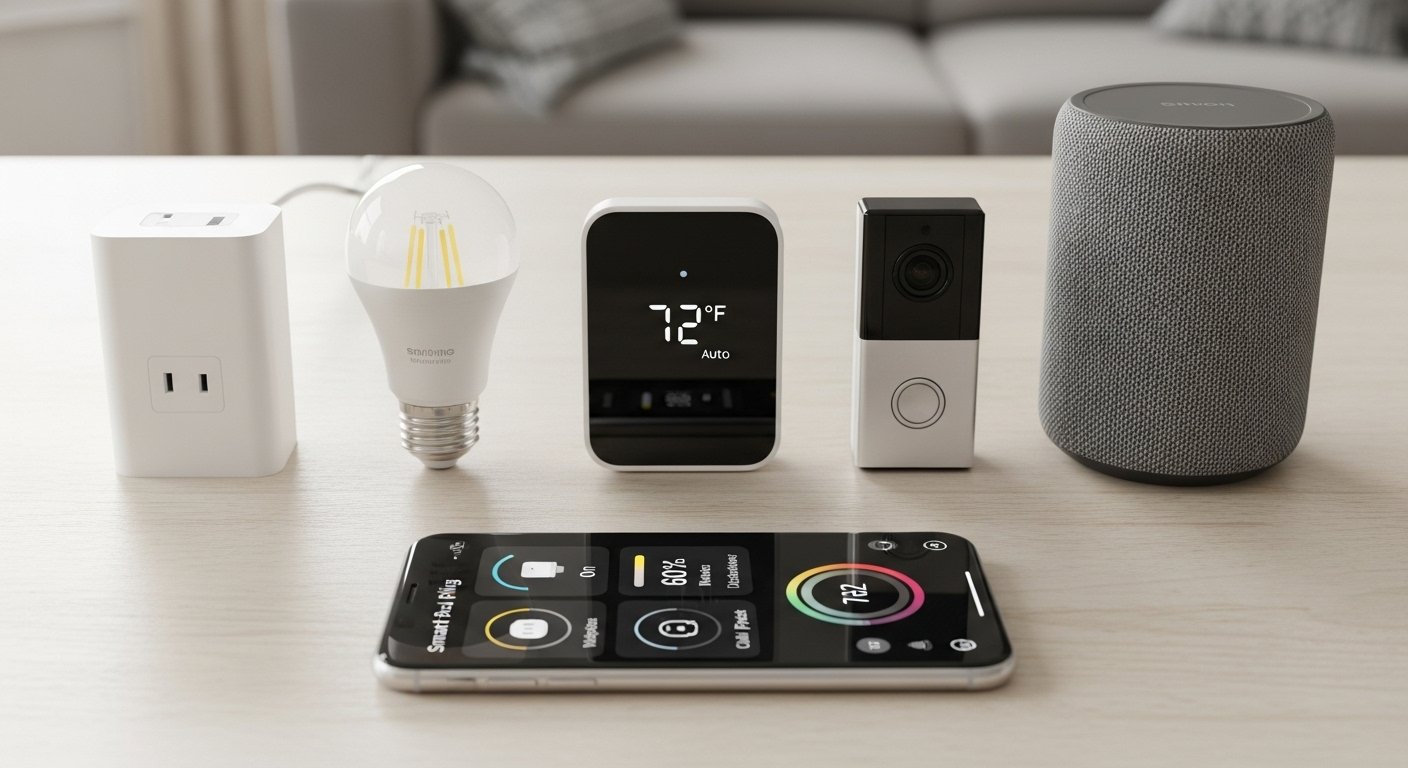
5 Must-Have Smart Home Devices for Beginners: Your First Steps into Automation
Ready to dive into home automation? These five devices are perfect for a beginner smart home setup, offering excellent functionality without complex installations. They represent the essential smart home products for beginners, providing a solid foundation for your connected home.
1. Smart Plugs: The Gateway to Smart Home Automation
Smart plugs are arguably the simplest and most impactful first smart home devices you can buy. These small adapters plug into any standard wall outlet, and then you plug your regular appliance into the smart plug. Suddenly, your ordinary lamp, coffee maker, or fan becomes ‘smart’!
Why they’re a must-have for beginners:
- Easy Setup: Most smart plugs connect directly to your Wi-Fi network and are controlled via a simple app on your smartphone. Just plug them in, connect, and you’re ready to go. This makes them incredibly easy smart home devices.
- Affordable Foundations: They are among the best budget smart home devices, making home automation accessible without a significant investment.
- Instant Automation: You can turn devices on or off remotely, set schedules (e.g., have your lamp turn on at sunset), or even link them with voice assistants for hands-free control. These are fantastic simple home automation ideas.
A smart plugs beginner guide will often highlight how they allow you to automate nearly anything with an on/off switch. Imagine brewing your coffee automatically every morning or ensuring all your bedside lamps are off with a single voice command. They are foundational for how to start home automation on a small scale.
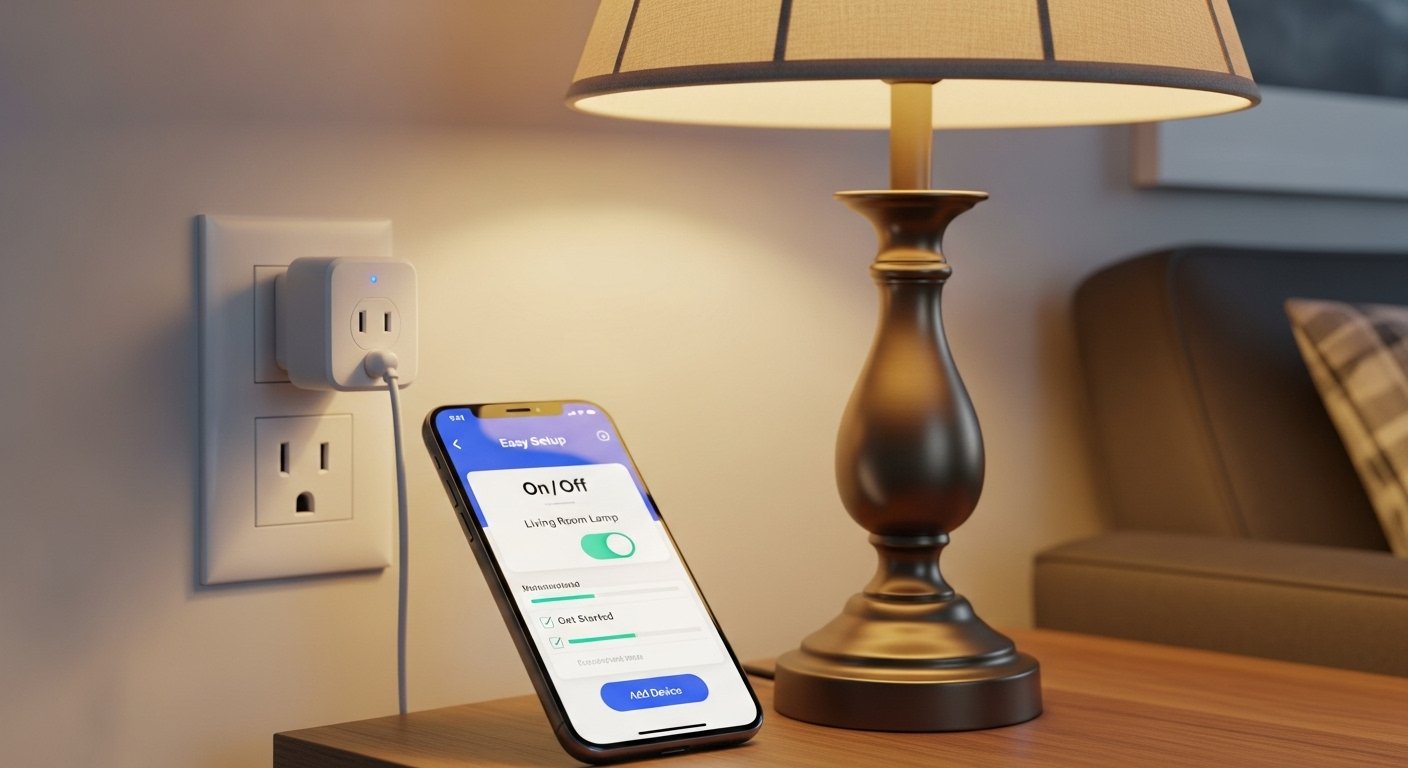
2. Smart Lighting: Brighten Your Home, Simplify Your Life
Upgrading your lighting is another excellent way to experience the benefits of home automation firsthand. Smart lighting systems, such as Philips Hue, replace your traditional light bulbs with smart ones that you can control from an app or a voice assistant. [7]
Why they’re a must-have for beginners:
- Enhanced Ambiance: Adjust brightness and color temperature to suit your mood or time of day. Some even offer millions of colors!
- Energy Efficiency: Schedule lights to turn off when you leave or dim them to conserve energy. This directly addresses the 41% of smart home buyers motivated by saving money. [Report: November 2024 consumer research report]
- Convenience: Turn lights on or off from anywhere, even when you’re not home, adding an extra layer of security. This is smart lighting for first-timers at its best.
While some advanced systems might use a small hub, many smart bulbs now connect directly to Wi-Fi, making smart lighting for first-timers a breeze. It’s a noticeable upgrade that offers both practical benefits and a touch of modern luxury.
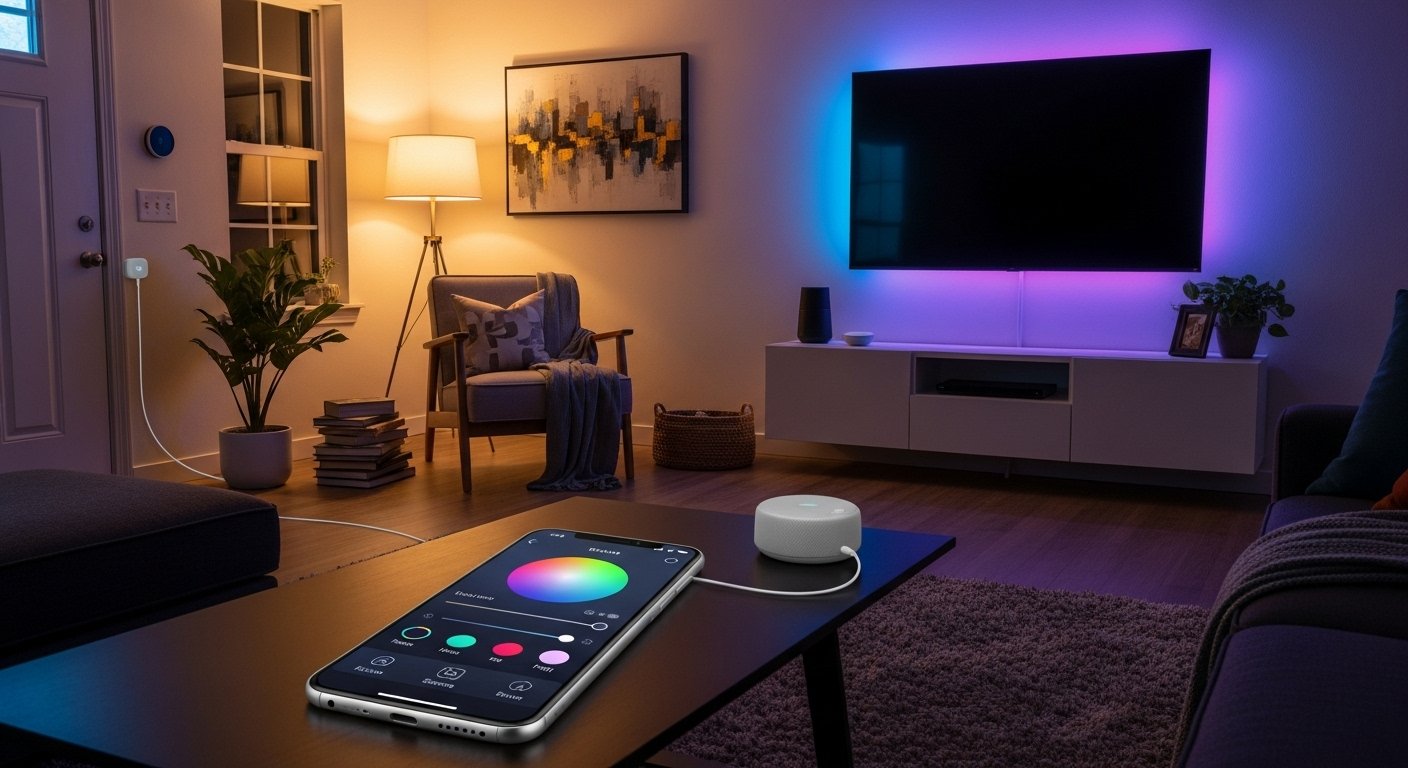
3. Smart Thermostats: Intelligent Comfort and Energy Savings
A smart thermostat (like Nest or Ecobee) is a powerhouse for both comfort and cost savings. These devices learn your preferences and daily routines to automatically adjust your home’s temperature, ensuring you’re comfortable while minimizing energy waste. [10]
Why they’re a must-have for beginners:
- Automated Climate Control: Set schedules, or let the thermostat learn your habits. Some even use geofencing to detect when you’re home or away.
- Significant Energy Savings: By intelligently managing your heating and cooling, a smart thermostat can drastically reduce your energy consumption, aligning with the motivations of cost-saving smart home adopters. This makes them a beginner friendly smart thermostat and a wise investment.
- Remote Control: Adjust the temperature from your phone, so your home is perfectly comfortable the moment you walk through the door.
Installing a beginner friendly smart thermostat usually involves replacing your old thermostat with the new smart model. While it might require a little more DIY effort than a smart plug, manufacturers provide clear instructions, making it manageable for most beginners to set up. It’s an effective way to automate the essentials and achieve substantial long-term savings.
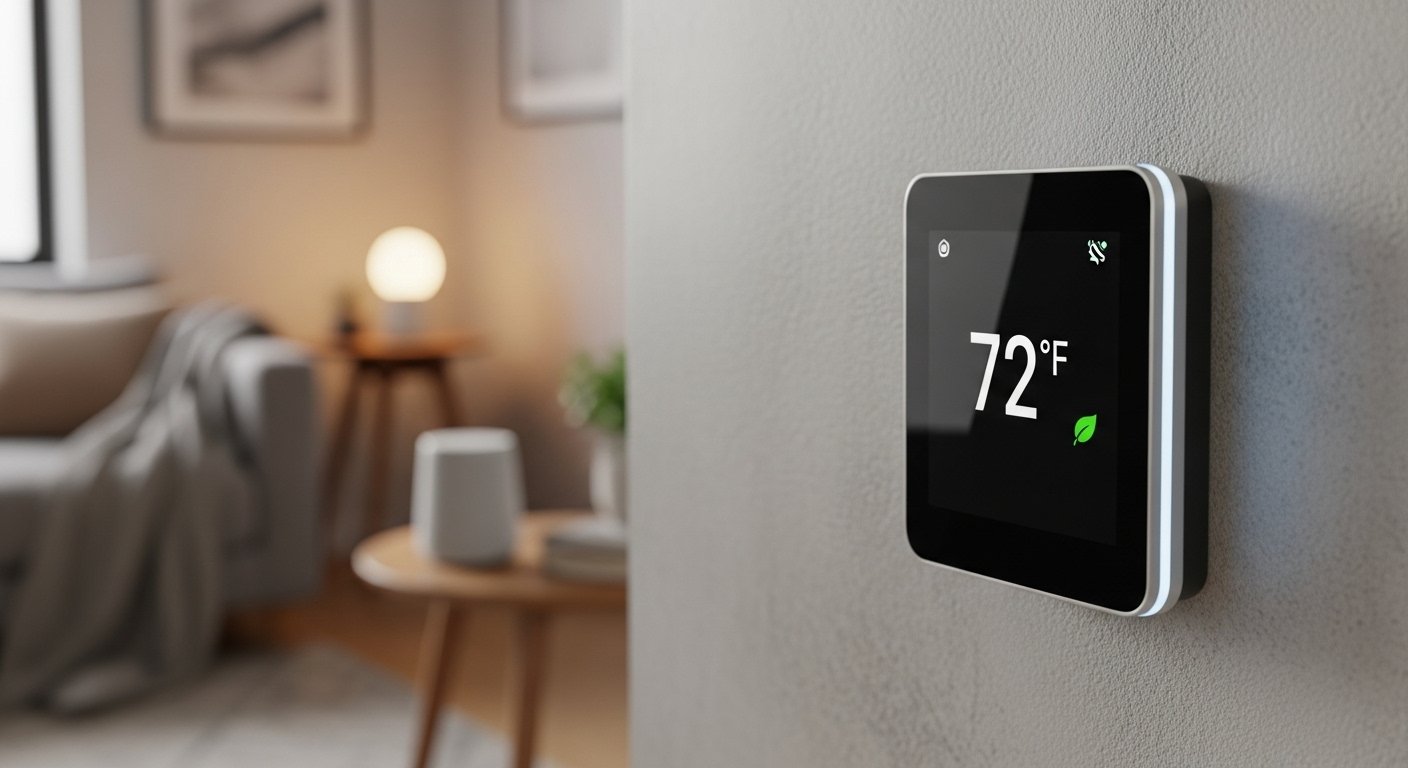
4. Smart Security Cameras or Video Doorbells: Enhance Your Home’s Safety
For those prioritizing peace of mind, a smart security camera or a smart video doorbell (like Ring or Arlo) offers an excellent entry point into smart home security. These devices allow you to monitor your home, see who’s at your door, and even communicate with visitors from anywhere using your smartphone. [2]
Why they’re a must-have for beginners:
- Enhanced Security: Receive alerts for motion detection, see live video feeds, and deter potential intruders. The focus on safety and security motivates 37% of smart home buyers. [Report: November 2024 consumer research report]
- Remote Monitoring: Keep an eye on your home even when you’re away, which is especially useful for students living in shared accommodations or when traveling.
- Easy Setup: Many modern smart security cameras and video doorbells are designed for straightforward installation, often connecting wirelessly to your Wi-Fi network. This makes for a smart security camera easy setup.
These devices help you enhance security by providing vital surveillance and communication capabilities. Whether it’s monitoring package deliveries or simply knowing who’s knocking, a smart security camera easy setup offers invaluable peace of mind.
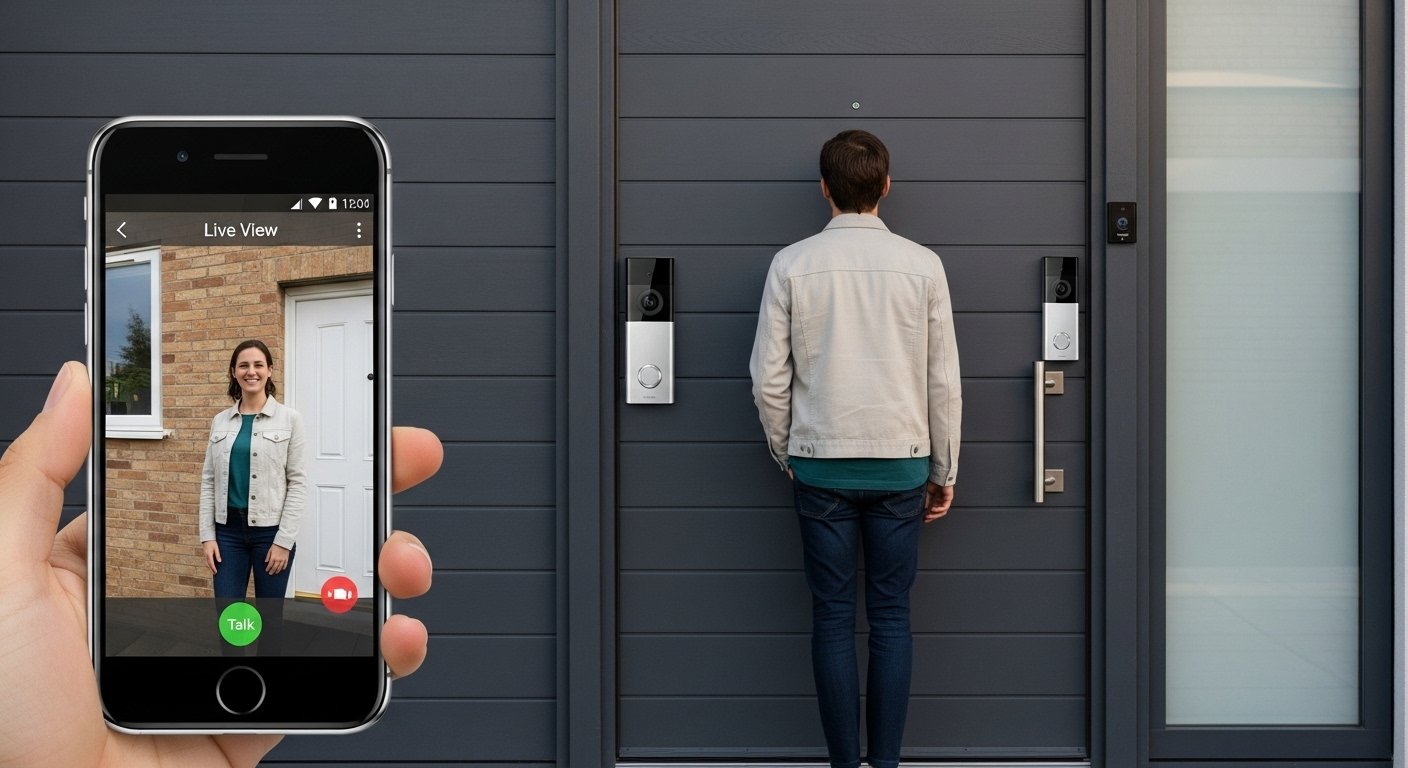
5. Voice Assistant-Enabled Smart Speakers/Displays: Your Command Center
Smart speakers and smart displays, such as the Amazon Echo (with Alexa) or Google Home (with Google Assistant), serve as the hub for voice control in your smart home. These devices allow you to control other smart devices, play music, get answers to questions, and much more, all with just your voice. [7]
Why they’re a must-have for beginners:
- Centralized Control: Act as a central point to control your smart plugs, lighting, and thermostats using simple voice commands. This makes them a de facto smart home hub for beginners.
- Hands-Free Convenience: Turn off lights, adjust the thermostat, or check the weather without lifting a finger.
- Entertainment Hub: Entertainment systems, including smart speakers and displays, are a common entry point for smart home technology, with 61% of adopters utilizing them, based on a November 2024 report. [Report: November 2024 consumer research report]
- Information at Your Fingertips: Ask questions, set timers, get news updates, and manage your calendar. Voice Assistants truly elevate the benefits of starting a smart home journey.
These smart speakers and displays are incredibly versatile and user-friendly, providing an intuitive way to interact with your smart home ecosystem. They are perfect for students managing busy schedules, offering quick access to information and control over their environment.

Building Your Smart Home Ecosystem: Tips for Beginner Smart Home Setup
Embarking on your smart home journey is an exciting venture! Here are some practical tips on how to start home automation and build your smart home brick by brick, ensuring an easy smart home setup:
1. Start Small and Simple: Don’t try to automate your entire home overnight. Begin with one or two of the first smart home devices mentioned above that address a specific need or provide immediate convenience. This approach allows you to learn the ropes and gradually expand your system.
2. Consider Compatibility: As you add more devices, think about their compatibility. Many brands work well together, especially with popular voice assistants like Alexa and Google Assistant. This helps create a cohesive smart home ecosystem for beginners. Look for devices labeled “Works with Alexa” or “Works with Google Assistant.”
3. Prioritize Your Needs: What do you want your smart home to do for you? Do you want to save energy, enhance security, or simply add convenience? Identifying your priorities will help you choose the most relevant what smart devices do I need for your lifestyle. A November 2024 report shows 41% of buyers are motivated by saving money, and 37% by safety and security, highlighting common priorities. [Report: November 2024 consumer research report]
4. Leverage Wi-Fi Connectivity: Most easy smart home devices rely on your existing Wi-Fi network, simplifying installation. Ensure your Wi-Fi signal is strong throughout your home, especially where you plan to place smart devices.
5. Explore Simple Home Automation Ideas: Once you have a few devices, experiment with basic automation routines. For instance, set your smart lights to turn on when your smart security camera detects motion, or have your smart thermostat adjust when your smart speaker plays an “away” routine. You can learn more about advanced automation by reading our guide on Unlock Your Smart Home: A Beginner’s Automation Guide.
The adoption of smart home technology is steadily increasing. Approximately 42% of households across the United States had adopted at least one smart home device as of September 2023, showcasing a growing trend towards connected living. [11] Furthermore, the high satisfaction rate of 97% among smart home device owners in 2024 data indicates that users generally find these technologies beneficial and worth the investment. [11]
By following these steps, you can confidently set up a smart home that truly enhances your daily life, making your space more efficient, secure, and enjoyable.
The Future is Now: Benefits of Starting Your Smart Home Journey
Starting your home automation journey, even with just a few smart home essentials for new users, opens the door to a world of benefits that extend beyond mere convenience. The advantages are numerous and impactful:
- Unparalleled Convenience: From adjusting lighting with your voice to remotely controlling appliances, smart devices simplify everyday tasks, giving you more time for what matters.
- Significant Energy Efficiency: Devices like smart thermostats and smart lighting actively work to reduce energy consumption, leading to lower utility bills and a smaller carbon footprint. This is a primary motivator for many smart home buyers. [Report: November 2024 consumer research report]
- Enhanced Safety and Security: Smart security cameras, video doorbells, and smart locks provide robust monitoring and control over your home’s safety, offering peace of mind whether you’re home or away. [2]
- Cost Savings Over Time: While there’s an initial investment, the energy savings and potential for insurance discounts (due to enhanced security) can lead to long-term financial benefits. This addresses the common search for best budget smart home devices and their long-term value.
- Increased Comfort and Control: Customize your environment to your exact preferences, creating a living space that truly responds to your needs and mood.
The smart home market is not just a passing trend; it’s a rapidly evolving sector poised for significant growth. The global smart home market is projected to reach USD 537.27 billion by 2030, highlighting the increasing integration of technology into our homes. Embrace the future of living by taking these smart steps. For more guidance on integrating smart devices into your home, explore our detailed guide on Home Automation for Beginners: Smart Steps. Getting started with a few smart home devices for beginners can transform your living experience, making your home a more intelligent, responsive, and enjoyable place to be. You can learn more about the broader impact of connected devices and the Internet of Things from authoritative sources like Home automation on Wikipedia.
Key Takeaways
- Starting with home automation is easy and accessible for beginners with the right devices.
- Smart Plugs, Smart Lighting, Smart Thermostats, Smart Security Cameras/Video Doorbells, and Voice Assistant-Enabled Smart Speakers are excellent first smart home devices.
- A smart home hub can simplify control and enable complex automations as your ecosystem grows, but isn’t always essential to start.
- Key benefits of smart homes include convenience, energy savings, enhanced security, and long-term cost reduction.
- The smart home market is rapidly growing, with high user satisfaction rates, indicating a valuable investment for modern living.
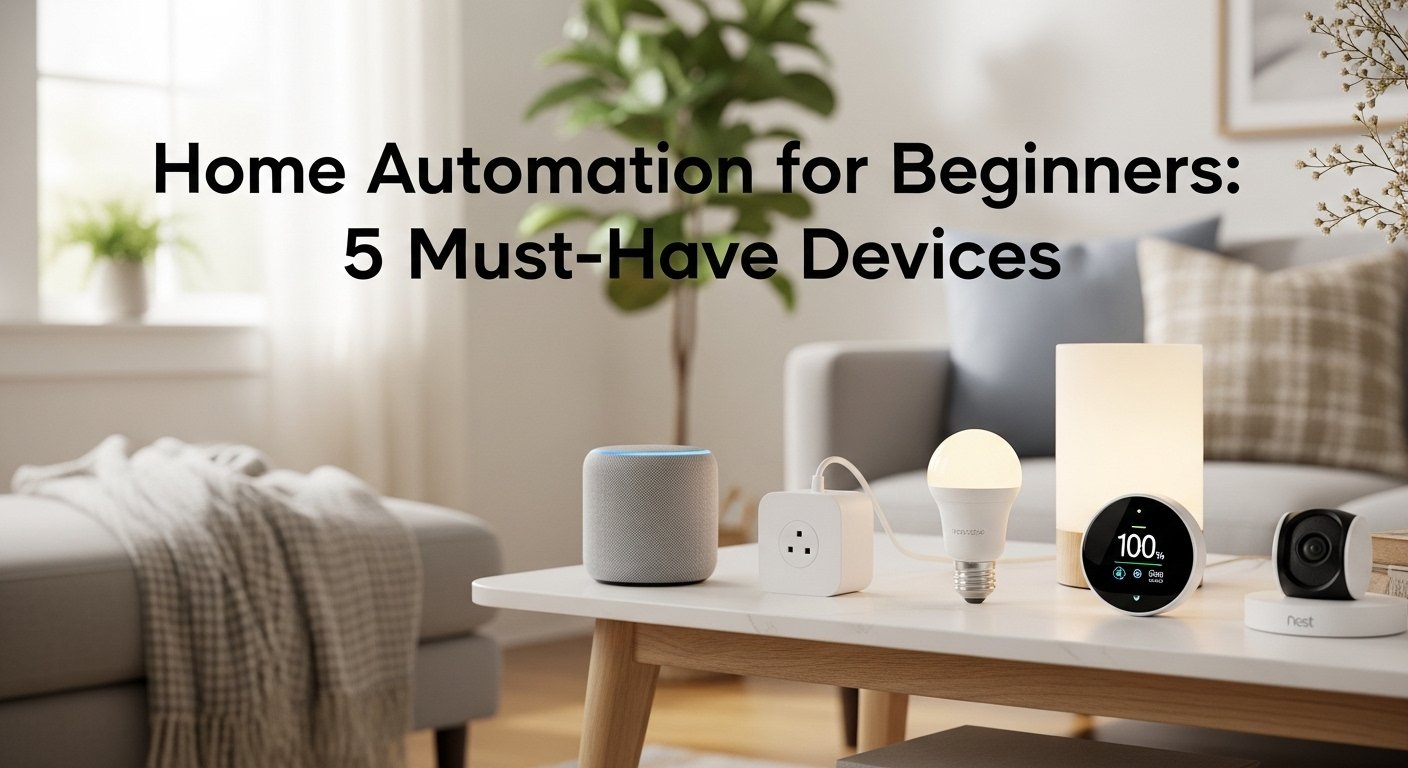
Leave a Reply